Free verse is an open form of poetry, which in its modern form arose through the French vers libre form. It does not use consistent meter patterns, rhyme, or any musical pattern. It thus tends to follow the rhythm of natural speech.

An ode is a type of lyric poetry. Odes are elaborately structured poems praising or glorifying an event or individual, describing nature intellectually as well as emotionally. A classic ode is structured in three major parts: the strophe, the antistrophe, and the epode. Different forms such as the homostrophic ode and the irregular ode also enter.

Poetry, also called verse, is a form of literature that uses aesthetic and often rhythmic qualities of language − such as phonaesthetics, sound symbolism, and metre − to evoke meanings in addition to, or in place of, a prosaic ostensible meaning. A poem is a literary composition, written by a poet, using this principle.
In poetry, a stanza is a group of lines within a poem, usually set off from others by a blank line or indentation. Stanzas can have regular rhyme and metrical schemes, but they are not required to have either. There are many different forms of stanzas. Some stanzaic forms are simple, such as four-line quatrains. Other forms are more complex, such as the Spenserian stanza. Fixed verse poems, such as sestinas, can be defined by the number and form of their stanzas.
In medicine, a pulse represents the tactile arterial palpation of the cardiac cycle (heartbeat) by trained fingertips. The pulse may be palpated in any place that allows an artery to be compressed near the surface of the body, such as at the neck, wrist, at the groin, behind the knee, near the ankle joint, and on foot. Pulse is equivalent to measuring the heart rate. The heart rate can also be measured by listening to the heart beat by auscultation, traditionally using a stethoscope and counting it for a minute. The radial pulse is commonly measured using three fingers. This has a reason: the finger closest to the heart is used to occlude the pulse pressure, the middle finger is used get a crude estimate of the blood pressure, and the finger most distal to the heart is used to nullify the effect of the ulnar pulse as the two arteries are connected via the palmar arches. The study of the pulse is known as sphygmology.

Anna Thilda May "May" Swenson was an American poet and playwright. Harold Bloom considered her one of the most important and original poets of the 20th century.
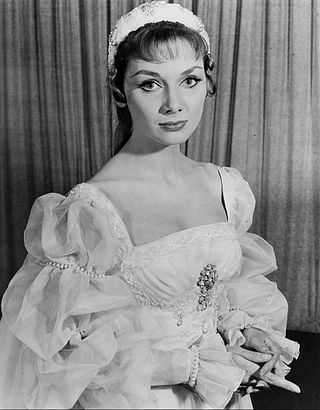
Inga Swenson is an American actress and singer. She appeared in multiple Broadway productions and has been nominated twice for the Tony Award for Best Actress in a Musical for her performances as Lizzie Curry in 110 in the Shade and Irene Adler in Baker Street. She also spent seven years portraying Gretchen Kraus in the ABC comedy series Benson.
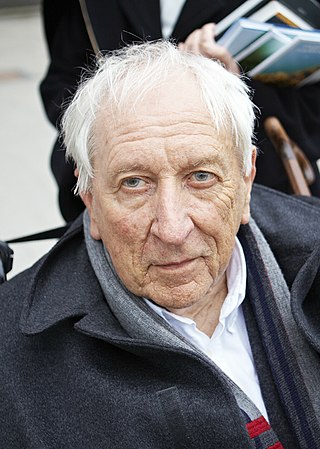
Tomas Gösta Tranströmer was a Swedish poet, psychologist and translator. His poems captured the long Swedish winters, the rhythm of the seasons and the palpable, atmospheric beauty of nature. Tranströmer's work is also characterized by a sense of mystery and wonder underlying the routine of everyday life, a quality which often gives his poems a religious dimension. He has been described as a Christian poet.

Richard Edward Wilson is an American composer and pianist. Rejecting serialism, to some extent Wilson engages in tonality, though often with the use of considerable chromaticism. His oeuvre includes orchestral, operatic, instrumental, and chamber music among other genres.

John Hall Wheelock was an American poet. He was a descendant of Eleazar Wheelock, founder of Dartmouth College. The son of William Efner Wheelock and Emily Charlotte Hall, John Hall Wheelock was born in Far Rockaway, New York, and brought up in the neighborhood now occupied by Rockefeller Center. He summered in a family home on Long Island's South Fork, which provided inspiration for much of his work.
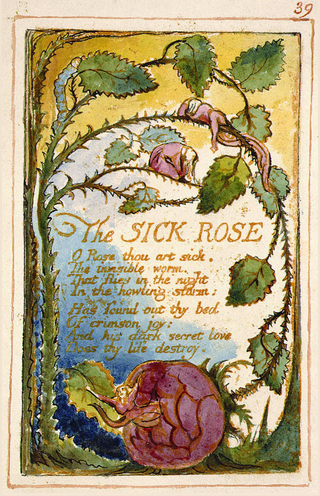
"The Sick Rose" is a poem by William Blake, originally published in Songs of Innocence and of Experience as the 39th plate; the incipit of the poem is O Rose thou art sick. Blake composed the poem sometime after 1789, and presented it with an illuminated border and illustration, typical of his self-publications. Since the 20th century, the poem has been the subject of scrutiny by scholars for its oblique and enigmatic meaning, and bizarre, suggestive imagery.

Navel fetishism, belly button fetishism, or alvinophilia is a partialism in which an individual is attracted to the human navel.
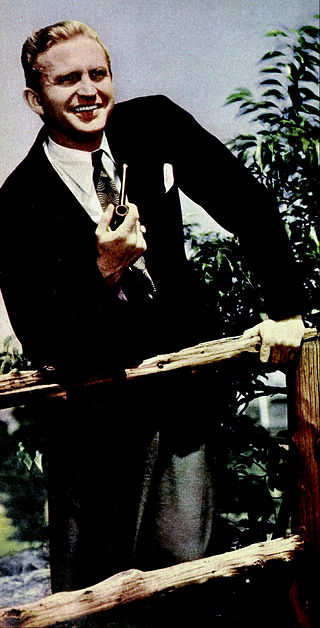
Karl Swenson was an American theatre, radio, film, and television actor. Early in his career, he was credited as Peter Wayne.
Nationality words link to articles with information on the nation's poetry or literature.
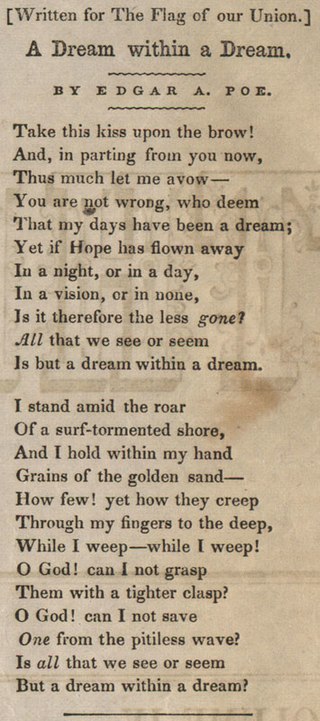
"A Dream Within a Dream" is a poem written by American poet Edgar Allan Poe, first published in 1849. The poem has 24 lines, divided into two stanzas.
NET Playhouse was an American dramatic television anthology series produced by National Educational Television. NET subsequently merged with WNDT Newark to form WNET, and was superseded by the Public Broadcasting Service, though the NET title did remain. In addition to episodes produced in the United States, the series also aired episodes that were originally produced and broadcast in the United Kingdom. The series occasionally broadcast feature films, such as L'Avventura and Knife in the Water.
Kenneth Lloyd Swenson is a retired middle-distance runner from the United States. Swenson was the world leader at 800 meters in 1970 and competed in the 1972 Summer Olympics in Munich.
Barbara Howes was an American poet.
Karen Swenson is an American poet and journalist.
Sam Hamill was an American poet and the co-founder of Copper Canyon Press along with Bill O’Daly and Tree Swenson. He also initiated the Poets Against War movement (2003) in response to the Iraq War. In 2003 Hamill he did a poetic tour in Italy, organised by writer Alessandro Agostinelli. After that tour Hamill published his first italian book A Pisan Canto - Un canto pisano.










